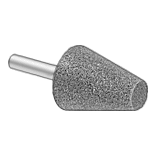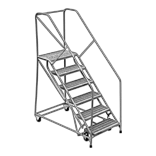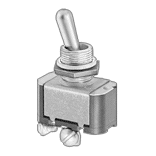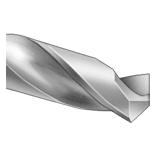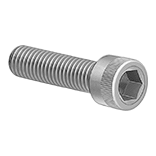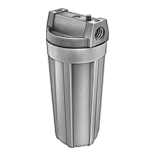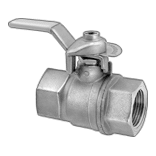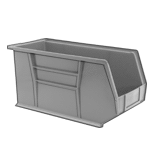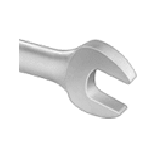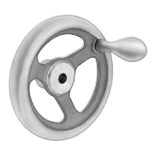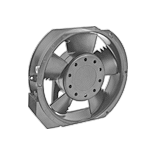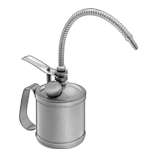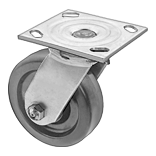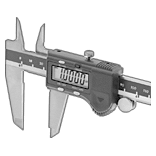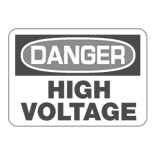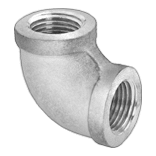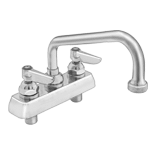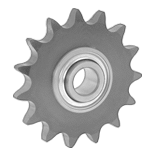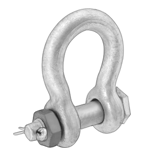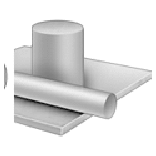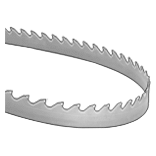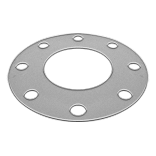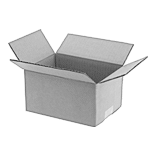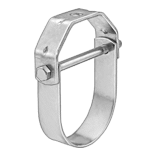Impact-Resistant 3D Printer Resins

Bumps, scrapes, and falls won’t damage parts made from these tough resins because they absorb impact without cracking or breaking. They’re good for creating tool handles, storage cases, and other parts that are handled and dropped often. Print them on a digital light processing (DLP), stereolithography (SLA), or LCD 3D printer.
Tensile strength is the best measure of a resin’s overall strength. Similar to the stress applied on a rope during a game of tug-of-war, it’s the amount of pulling force a material can handle before breaking. A higher rating means a stronger resin.
Elongation is the amount of stretching that a material can withstand before breaking. Resins with a low elongation can break suddenly under load, while resins with a high elongation will deform before breaking. The higher the percentage, the more your part will deform before breaking.
Maximum exposure temperature is the point at which a printed part will begin to deform. Above this temperature, your part will start to lose structural integrity.
| Impact Strength | Tensile Strength | Color | Flexural Modulus | Hardness | Elongation | Modulus of Elasticity | Max. Exposure Temp. | Weight, g | Each | |
| 0.74 ft.-lbs./in. (Excellent) | 5,650 psi (Good) | Black | 260,000 psi (Semi-Rigid) | Durometer 65D (Medium) | 55% | 0.224 ksi × 103 | 60° C 140° F | 1,000 | 0000000 | 0000000 |
| 0.88 ft.-lbs./in. (Excellent) | 6,230 psi (Good) | Black | 190,000 psi (Flexible) | Durometer 76D (Medium) | 90% | 0.196 ksi × 103 | 50° C 122° F | 1,000 | 0000000 | 000000 |
| 0.91 ft.-lbs./in. (Excellent) | 7,100 psi (Good) | Black | 250,000 psi (Semi-Rigid) | Durometer 67D (Medium) | 33% | 0.255 ksi × 103 | 60° C 140° F | 1,000 | 0000000 | 000000 |
High-Temperature 3D Printer Resins

Parts made from these resins remain strong and rigid in temperatures that would soften most plastic, so they're often used near ovens, engines, and other hot machinery. They're a good lightweight alternative to machined metal parts. Print them on a digital light processing (DLP), stereolithography (SLA), or LCD 3D printer.
Maximum exposure temperature is the point at which a printed part will begin to deform. Above this temperature, your part will start to lose structural integrity.
| Tensile Strength | Color | Flexural Modulus | Impact Strength | Hardness | Max. Exposure Temp. | Weight, g | Each | |
Resins—Bottle | ||||||||
|---|---|---|---|---|---|---|---|---|
| 7,390 psi (Good) | Black | 520,000 psi (Semi-Rigid) | 0.27 ft.-lbs./in. (Poor) | Durometer 94D (Hard) | 275° C 527° F | 1,000 | 0000000 | 0000000 |
3D Printer Resins

Because these resins balance strength and impact resistance, they're good for printing parts for general purpose applications. Print them on a digital light processing (DLP), stereolithography (SLA), or LCD 3D printer.
Tensile strength is the best measure of a resin’s overall strength. Similar to the stress applied on a rope during a game of tug-of-war, it’s the amount of pulling force a material can handle before breaking. A higher rating means a stronger resin.
Elongation is the amount of stretching that a material can withstand before breaking. Resins with a low elongation can break suddenly under load, while resins with a high elongation will deform before breaking. The higher the percentage, the more your part will deform before breaking.
Maximum exposure temperature is the point at which a printed part will begin to deform. Above this temperature, your part will start to lose structural integrity.
| Tensile Strength | Color | Flexural Modulus | Impact Strength | Hardness | Flexural Strength, psi | Elongation | Modulus of Elasticity | Max. Exposure Temp. | Weight, g | Each | |
| 5,070 psi (Good) | Black | 220,000 psi (Semi-Rigid) | 0.41 ft.-lbs./in. (Poor) | Durometer 77D (Medium) | 9,500 | 25% | 0.239 ksi × 103 | 50° C 122° F | 1,000 | 0000000 | 0000000 |
High-Strength 3D Printer Resins

Used to print tooling, fixturing, and brackets, these resins create high-performance parts that are strong, stable, and rigid. Print them on a digital light processing (DLP), stereolithography (SLA), or LCD 3D printer.
Maximum exposure temperature is the point at which a printed part will begin to deform. Above this temperature, your part will start to lose structural integrity.
| Tensile Strength | Color | Flexural Modulus | Impact Strength | Hardness | Max. Exposure Temp. | Weight, g | Each | |
Resins—Bottle | ||||||||
|---|---|---|---|---|---|---|---|---|
| 10,150 psi (Good) | Black | 400,000 psi (Semi-Rigid) | 0.39 ft.-lbs./in. (Poor) | Durometer 84D (Hard) | 100° C 212° F | 1,000 | 0000000 | 0000000 |
| 12,030 psi (Excellent) | Black | 450,000 psi (Semi-Rigid) | 0.24 ft.-lbs./in. (Poor) | Durometer 81D (Hard) | 110° C 230° F | 1,000 | 0000000 | 000000 |
Flexible 3D Printer Resins


Stretchy, soft, and sturdy, these resins make durable parts that resist breaking from repeated use. They’re often used to create long-lasting parts, such as seals, sleeves, and gaskets. These resins are also good for making springs, snap-fit parts, and other components that handle high impact. Print them on a digital light processing (DLP), stereolithography (SLA), or LCD 3D printer.
Formlabs resins come in a cartridge compatible with Formlabs printers—just pop them in. To use them with other printers, they have a removable cap to pour out the contents of the cartridge.
Quick-Printing 3D Printer Resins

Speed up your prototyping process with these resins, which print three times faster than other resins. Print them using a digital light processing (DLP), stereolithography (SLA), or LCD 3D printer.
Tensile strength is the best measure of a resin's overall strength. Similar to the stress applied on a rope during a game of tug-of-war, it’s the amount of pulling force a material can handle before breaking. A higher rating means a stronger resin.
Elongation is the amount of stretching that a material can withstand before breaking. Resins with a low elongation can break suddenly under load, while resins with a high elongation will deform before breaking. The higher the percentage, the more your part will deform before breaking.
Maximum exposure temperature is the point at which a printed part will begin to deform. Above this temperature, your part will start to lose structural integrity.
| Tensile Strength | Color | Flexural Modulus | Impact Strength | Hardness | Flexural Strength, psi | Elongation | Modulus of Elasticity | Max. Exposure Temp. | Weight, g | Each | |
| 6,810 psi (Good) | Black | 350,000 psi (Semi-Rigid) | 0.37 ft.-lbs./in. (Poor) | Durometer 71D (Medium) | 11,800 | 4% | 0.274 ksi × 103 | 65° C 149° F | 1,000 | 0000000 | 000000 |
Static-Dissipative 3D Printer Resins

Create printed parts that protect electronics from electrostatic discharge (ESD) buildup. These resins are also impact resistant. They’re good for final products, electronics housings, and jigs and fixtures in electronics manufacturing. Print them on a digital light processing (DLP), stereolithography (SLA), or LCD 3D printer. They come in a cartridge compatible with Formlabs printers—just pop them in. To use them with other printers, they have a removable cap to pour out the contents of the cartridge.
Maximum exposure temperature is the point at which a printed part will begin to deform. Above this temperature, your part will start to lose structural integrity.
| Tensile Strength | Color | Flexural Modulus | Impact Strength | Hardness | Max. Exposure Temp. | Surface Resistivity, ohms/sq. | Weight, g | Each | |
Formlabs | |||||||||
|---|---|---|---|---|---|---|---|---|---|
| 6,410 psi (Good) | Black | 260,000 psi (Semi-Rigid) | 0.48 ft.-lbs./in. (Good) | Durometer 90D (Hard) | 60° C 143° F | 105-108 | 1,000 | 0000000 | 0000000 |
